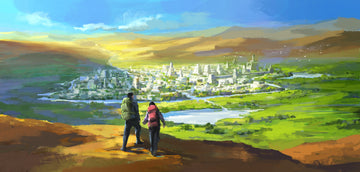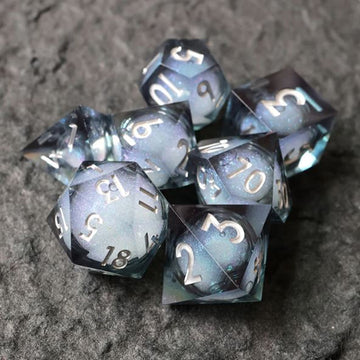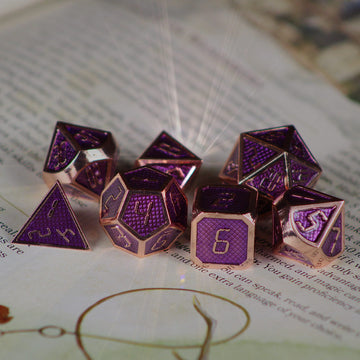Discover the DnD 5e Travel Rules, Why It's Important, and Why It Sucks in DnD 5e
By Riley Rath
Table of Contents
- Why Travel Is Important for DnD 5e Adventures
- Travel DnD 5e: Every Relevant Rule
- Why Travel in DnD 5e SUCKS (Rules as Written)
- FAQ
- Conclusion
Travel in D&D 5e doesn't need to suck.
Don't get me wrong... it often does suck. It can lead to boring, terrible, no god, very bad sessions. Too often it isn't half as exciting as the ancient dwarven stronghold the party is trying to reach.
But it doesn't have to suck... it can be A LOT of fun... like "standout good session" fun!
Unfortunately, travel is a part of the exploration pillar (ie. the forgotten pillar) and likewise it too is neglected. Very few tables regularly play out the travel portions of their campaigns, and even fewer know how to run it well (apart from railroading). Which is A CRYIN' SHAME because it can fit well within the fun combat, role-playing, and exploration that makes D&D special.
Clearly, we need to rethink and rework D&D 5e travel.
This post is #1 in a series on how to do 5e travel well. Post #2 covers methods of running overland travel, and post #3 offers three homebrew mechanics that create the best way to run travel in your games.
This post explains travel's place in our fantasy adventures, the official 5e rules, and why it sucks in D&D.
Wanna Gear Up Before You Read On?
Explore Our New 5e Dice Sets

Why Travel Is Important for DnD 5e Adventures
Before I go any further... an admission: travel is not necessary for every D&D and TTRPG adventure. It is not essential for every plot, every group, or every session. As I'll explain later on, some CAMPAIGNS are better with little to none of it. That said...
"Never playing travel" is the default for far, far too many 5e games.
It is assumed that "no travel = better campaign." And as a result, many players have no idea what a rich, fun, and meaningful journey from A to B looks like.
A since it is always foolish for one to assume they are the exception, it would be silly to assume that YOUR campaign is better off without it. Being the good, reasonable, TTRPG hobbyists we are, you should at least consider all the good things travel offers...
And as far as I can tell, there are seven distinct benefits DnD travel beings to a tabletop experience...
1) It's Usually Necessary
It is likely that unless your campaign takes place in a single city, your party is going to HAVE to travel; they gotta get from point A to point B. Likewise, the vast majority of stories involve a "crossing the threshold" where the characters must leave the known world if they want to adventure. So first thing's first: travel is necessary for MOST adventures.
2) It Allows Characters to See the World
On that same note, characters are not just crossing a threshold, but also experiencing the strange world on the other side. Great adventure movies, books, and video games usually feature distinct and interesting settings for the heroes to explore. In the same vein, when your players journey, they see different parts of your world. And I imagine you do not want all that world building to go to waste!
But... and this is an important "but"... you could skip travel sessions and still adventure throughout the world. The DM could "hand wave" a trek and continue to journey. In that case, the question becomes... "Why should you actually spend real-world time playing travel encounters and sessions? Why do you need to PLAY it at all?"

3) It Gives the World a Sense of Scale
We'll start with the obvious: travel gives the world a sense of scale. Just like in a video game, the world feels bigger if you do not skip past the "getting to know the place of the mission" part. Taking several sessions to get from point A to point B communicates to the players that the world their characters find themselves in is a BIG @SS WORLD.
4) It Helps the World Come to Life
Which means travel helps the world feel alive. Every town they pass is full of NPCs. Every forest has monsters. Every government has some backstabbing bastard (literally and figuratively) plotting revenge. After a few sessions, players will unconsciously understand that the world is full of stuff, and their imagination will fill in a lot of the blanks.
5) It Creates a Sense of Danger
Which is great... cuz for better or worse, our brains usually imagine the worst! Incorporating travel helps create a sense of danger. And all these dangerous things bring the tension necessary for exciting storytelling. A good adventure is full of threats for players to avoid or overcome!
6) It Gives Players Agency
And that is another thing... the players get to CHOOSE how/where to travel AND how to tackle all these threats. Which is, like, kinda important for Dungeons and Dragons! D&D is shared storytelling, which means players need to have agency. Good DnD 5e traveling gives players agency.
7) It Presents Railroading
Finally, by protecting player agency, you avoid RAILROADING. That's right... good travel prevents railroading. Whether it be a module or the DM's world, the threats are there whether they fit with the plot or not. And when combined with rolls/random encounters, the DM's ability to railroad is greatly reduced.
In summary, here's the awesome ways travel will help your D&D 5e campaign:
- It's necessary for adventure
- It allows characters to see the world
- It gives the world a sense of scale
- It helps the world come to life
- It creates a sense of danger
- It gives players agency
- It prevents railroading

© Wizards of the Coast
Official Travel DnD 5e Rules as Written
So clearly traveling is an important part of most adventures... and that is true for all TTRPGs and fantasy stories, including Dungeons and Dragons. So what basic rules did Wizards of the Coast create in order to help us run it well in our campaigns?
*The following are rules, books, and page numbers for rules relevent to travel in DnD 5e. Links take you to Awesome Dice blog posts that expand on the topic*
Movement (Player's Handbook 181–182): When you travel... you move. Player character movement is measured differently depending on what type of distance is being covered in the encounter. Here is pretty much the only exclusive travel rules DND 5e has for its players: travel pace and marching order. Parties can move at a slow pace, normal pace, or fast pace ("forced march"). And in the case of random encounters, it suggests that players establish who is in the front rank of the adventuring party.
Exhaustion (PHB 291): When a player moves at a fast pace for too long, or suffers some other debilitating effect, they take levels of exhaustion, which is a great way to kill your character without ever fighting an enemy (6 levels of exhaustion = DEATH). Players can recover from a level of exhaustion by taking a long rest.
Travel Pace of the Creatures (PHB, Monster Manual): Each creature has a different movement speed. If a party is adventuring together, then they all move at the speed of the slowest creature.
Difficult Terrain (PHB 182): A dark forest, rushing river, or the rocky ground of a cave network are all considered difficult terrain. The open plains, a well-maintained road, or a large dungeon room would be considered normal terrain. Difficult terrain means creatures move at half speed.
Stealth and Hiding (PHB 175, 182–183, 192): To move stealthily while you travel, players can choose to move at a slow pace (half speed). Check out our full breakdown on how to run a stealth encounter.
Hit Points (PHB 12–15): Player characters can lose health if their travel time is too fast or too long. Read our comprehensive post on Hit Points to learn more.
Long Distance Chases (Dungeon Master's Guide, 252–255): Admittedly, WOTC did create rules for players being chased through both urban and forested environments... but both are really just skill checks and miss out on all the excitement a chase can bring. Click this link to see our alternative chase rules.
Surviving Cold Weather (Rime of the Frostmaiden, 10 & 11): Rules for player characters trying to survive blizzards and cold weather elements. Skill challenge: group of adventurers failed saving throw.
Hex Crawls (Tomb of Annihilation, 38): This method is particularly useful for long journeys across unknown or untamed wilderness. The exact distances of each hex is determined by the Dungeon Master.
Foraging and Tracking (DMG, 111): There is a foraging DC table depending on how harsh the environment is. There are no distinct rules for tracking in the wilds... just have players make a survival skill check.
Environmental Effects (DMG, 109–110): The Dungeon Master's Guide offers a few rules for traveling in extreme weather and surviving wilderness hazards. There are additional magical environmental effects in the resource Tasha's Cauldron of Everything.
Land Vehicles (PHB 155–157): Riding on a fresh mount or cart makes travel in DnD 5e much easier on the character's body. The cost, weight, carrying capacity, and speed of mounts and drawn vehicles will help you decide which is best for your campaign.
Downtime (PHB 187, Xanathar's 123–135): When there are uneventful days on the road, player characters need to find something to do! They can play games, train, or talk to friendly NPCs.

Why D&D 5e Travel Often SUCKS
I may be a huge advocate for actually playing out our long journeys one way or another, but even I can admit the obvious...
DnD 5e traveling SESSIONS CAN BE BOOOOOOOOOOORRRRRIIIINNNNNGGGGGGG.
Boring AF.
We will start by collectively pointing our fingers and blaming Wizards of the Coast. It's been like 9 years since 5e was released and there are STILL no comprehensive mechanics for travel DnD 5e. And given that D&D has expanded from pure dungeon delving and wargaming, and is more about cooperative storytelling, this is RIDICULOUS.
Now you might be thinking: "I dunno... you just listed all the rules above... seems like a lot." Except those rules add up to, like, 40 pages of the THOUSANDS they have published across all their rule books and adventure modules!!!! 40 pages to cover travel... ya know... the thing Frodo did for THREE VOLUMES ACROSS MIDDLE EARTH!?!
There are only rules for DnD 5e travel speed and 5e travel encounters.
And NO... random encounter tables for different environments DO NOT COUNT. Ginny D mocks this marvelously. She points out that WOTC's idea of interesting variety in travel encounters is having enemies attack from the back rather than the front (like... really? That's the best they could come up with?).
Ok... so WOTC left us out to dry... but that doesn't excuse the community for coming up with something better. Usually people learn how to play by playing; they observe their DM and other players and pick up the game as they go along.
And for D&D, that usually works great!
However... when it comes to travel in DnD 5e... since so few of us have played truly FUN and ENGAGING travel... we just perpetuate bad examples. We are all just winging it... going with our gut... and in this case, our gut betrays us. The default "gut instinct" combines all the worst parts of D&D in a single session. Travel in DnD 5e becomes tedious, meaningless, time consuming, and boring... and, unsurprisingly, everyone hates it.
Here is what I mean...
One instinct is to narrate a bit, add one or two random encounters, narrate some more, and have the players arrive at the destination. After all, when players are wandering a dungeon, a random encounter can be a really good way to keep them on their toes and add some excitement!
But random encounters while traveling? When they clearly have nothing to do with the plot or characters? And when they definitely won't result in a TPK?
Players see right through that crap and immediately recognize it as a meaningless scene with zero tension. And unsurprisingly, they don't think it is very fun.
Matt Coleville articulated this perfectly. When it comes to random travel DnD 5e encounters, DMs can either A) have them be not challenging (and thus a waste of time) or B) challenging... and then they are not only a threat to the party's health, but get in the way of the destination, which is what the players want more than anything else!
The best example I have of this is the hex crawl in Tomb of Annihilation. I think we all did a "roll a random encounter for every hex" for, like, two sessions before abandoning it for the entire campaign. After all, you can only fight off raptors so may times before it stops being cool (just look at Chris Pratt... the rule for him was "2 movies").
Another instinct is to have players roll more skill checks. Rolls to see if they stay on course, are warned of the upcoming ambush, or notice the crumbling tower on a hill. We thinks these will keep players engaged and create a sense of agency. But the problem? Rolling isn't the same as choosing... and the sense of responsibility and ownership is not nearly as strong.
Random Encounters and skill checks on their own are not enough to make travel for DnD 5e interesting.
Besides, the best parts of D&D are not the moments where it is just dice roll after dice roll after dice roll after dice roll... (you get the point). All the time you spend rolling is time you could be exploring, fighting, or socializing.
For example, dungeons tend to be full of traps. Because of that, lots of players err on the side of caution. This can lead to endless perception checks... which ruins both the DM's plans and the player's immersive experience. Endless survival, nature, and perception checks while traveling is even worse.
Both random encounters and constant rolling exacerbate the main problem with all travel in DnD 5e: they make it slow. Because just like in real life, it takes time:
- There are days spent on the road in god-forsaken land...
- Or hours waiting at an airport with nothing to do...
- Or miles of a hike where you are just focused on reaching the summit...

To accurately role-play the endless hours of travel would be excruciating for players and DMs alike.
Players want to meet strange people, explore forbidden castles, and face off against a vampire. You know what they DON'T want to do? Spend money on basic taverns, manage supplies, and set up/take down camp 9 days in a row. There is a reason players rarely visit those parts of their character sheet. These activities can be sprinkled in, but they DOMINATE travel and miss the point of adventuring.
And while I am sure a case can be made for tasking players with tracing every drop of water, morsel of food, and piece of equipment... the vast majority of campaigns do NOT benefit from that style of play. Remember, we play DnD to escape the mundane in life, not repeat it!
In summary, here is why travel in DnD 5e is often sucky... and boring... and dumb:
- Fifth Edition has almost no travel mechanics
- The rules we do have suck
- There is no authority the community turns toward to learn how to do it well
- Our instincts betray us when we try to do it
- Random encounters on their own make it worse
- Constant skill checks also make it worse
- It takes too much time
- It is TOO SLOW of a pace of play for most players
- During narration, players aren't doing anything
Long story short: no wonder so many players and DMs hate it!

Frequently Asked Questions for Travel DnD 5e
What About Planar Travel in DnD 5e?
Part of what makes fantasy RPGS special is the ability to leave the material plane and travel to other fantastic planes of existence. For your DnD party to do this, they are going to need some form of teleportation spell, magic item, or extra-planar vehicle.
There are two spells your players can use to exit the material plane: Plane Shift and Gate. These are VERY high level spells and require expensive material components. Etherealness lets you enter the Etheral Plane, but no others.
The other method is to find a portal to another plane. These portals form when there is some catasclysmic magic even or death of a magical creature, or if an environment on the material plane refelcts the environment on other outer/inner planes (this is more common for the Shadowfell, Feywild, and Elemental Planes). Horizon Walker Rangers are excellent at finding these portals.
The 5e adventure module and resource book Spelljammer: Adventures in Space includes several vehicles (a spelljammer) that characters can pilot. Player characters will need to reach the Astral Plane to use magically powered ships, but once there, they can hop across the outer planes through Astral Pools.
What About Sea Travel for DnD 5e?
Some of the most fun players will have journeying across vast distances will take place on the water. Players can board waterborne vessles and face priates and sea monsters as they cross oceans and seas.
The Dungeon Master's Guide offers rules for passengers, cargo, visibility, movement, and building a vehicle for travel. Additional rules for waterborne vessels are found in the 5e adventure module Ghosts of Saltmarsh, which is an aquatic campaign that akes place along the Sword Coast of the Forgotten Realms. It includes the stats for different types of ships and weather tables. For more thorough information on sea travel, I found Tibality's 5e Naval Combat pdf extremely helpful.
Where Can I Find 5e Travel Encounters?
Nearly all random encounter tables would work as a travel encounter table. There are literally hundreds online you can Google search, but pages 92-122 of Xanathar's Guide to Everything has hundreds of encounter options per biome, divided by party level.
Conclusion: Improving Traveling DnD 5e (The Work Has Only Just Begun...)
Orignally, this blog post was going to cover EVERYTHING about D&D 5e travel, not just why it's necessary, good, and why so many of us hate it oh so much.
And yet... as stated earlier... we are missing out on so much when we skip travel. We need more ways to play travel in our games and methods to make it more engaging and fun. But then I found myself 5,000 words later and lost in a structural nightmare.
So instead, I expanded the series into 3 posts:
- Post #2 is about all the main travel methods out there, as well as suggestions for making travel a lot more fun.
- Post #3 is about the key ingredient all those methods are missing, and my three new, simple mechanics that "fix" 5e travel once and for all.
Hopefully this post was a taste of what is to come and has sparked your imagination for introducing more travel into your own campaigns. The goal is simple: to make travel a REAL option in your campaigns, a different flavor of TTRPG adventures, and... something so good you and your players miiiiiight actually look forward to it.
Want Our Pros and Cons of Travel DnD 5e in one handy spot?
Tap this link to receive a handy PDF
Turn a 9,000 word post into 123 words!
Riley Rath

Riley is a freelance copywriter, content writer, and marketer based out of Spokane, WA. He is thankful to have the opportunity to combine his passion for imaginative role-playing to help FLGS, tabletop, board game, and D&D related businesses communicate their distinct value to players everywhere. When not playing or writing about board games or DnD, he is busy hiking, cooking, and gardening... very hobbit-like for a 6'4" dude.







